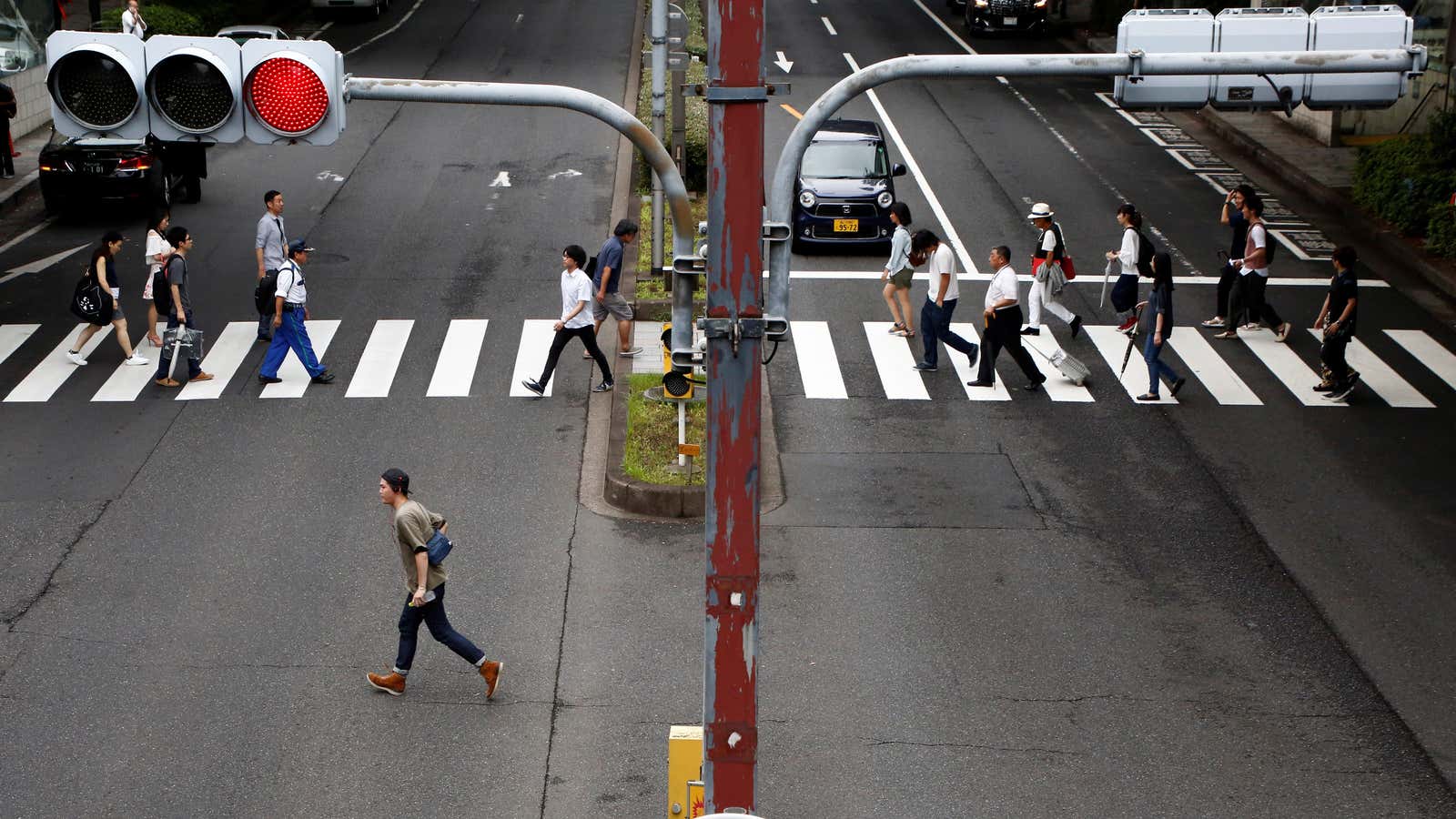In the places around the world where people live the longest, they don’t actually pursue health.
They live longer because health ensues from the right environment.
That is according to Dan Buettner, Blue Zones founder and National Geographic fellow, who has spent the last 15 years studying the five places around the world—dubbed Blue Zones—where people live the longest (into their 100s) and are healthiest: Okinawa, Japan; Sardinia, Italy; Nicoya, Costa Rica; Ikaria, Greece; and Loma Linda, California.
I had a chance to catch up with Buettner earlier this week, and he told me that in all five Blue Zones, people do not proactively exercise or seek health. Instead, physical activity just happens naturally as a result of their surroundings.
In the Blue Zones—just like in the US—Buettner says people go to work, over to their friends’ houses, out to eat, and get their kids off to school.
But in the Blue Zones—unlike most places in America—those daily commutes all represent occasions to walk. Residents of the Blue Zones are also known to grow gardens in their yard, and their houses are not full of mechanical conveniences. All of this means that these longest-lived cultures have made a habit of moving naturally every single day. And they don’t even think about it.
Compare that to the US, where 73% of people say they need to be more active and over 60% describe their lifestyle as sedentary. We typically address this issue by urging people to hit the gym or sign up for a 5K. But focusing on individual responsibility does not drive behavior change at a population level, according to Buettner.
“It is absolute delusion to think that we can convince 330 million Americans—three quarters of whom have already admitted they are not doing enough physical activity—to start exercising more,” says Buettner. “We have been trying this for 70 years and we still have 70% of Americans who are obese or overweight. It is not working.”
He acknowledges that a small percentage of people have the discipline and focus to stick with an exercise routine for 30 or 40 years to see the long-term health benefits. But for most Americans, Buettner believes the secret is living in an environment that empowers them to move mindlessly. “I think the answer is designing our cities for human beings,” he says.
Unfortunately most American cities over the last 70 years have been designed only with cars in mind—with high speed limits and wide lanes for cars, but no sidewalks, bike lanes, or green spaces for people. As a result, people are driving more and walking less. Buettner points out over 50% of American children walked to school in 1970. Today that number is about 10%.
There are, however, certain places in the US that are getting it right—Boulder, Colorado; San Luis Obispo, California; and Portland, Oregon, to name a few. In those locations, Buettner says people are measurably healthier with an extra 20 years of life expectancy over places like Tallahassee, Florida.
Buettner and his team at Blue Zones have personally worked with dozens of US cities over the last decade to make them more walkable and bikeable. He points out that in almost every case, the BMI and obesity rate in those cities have dropped as a result.
“We have hard evidence that when you optimize a city for walkability, bikeability, public transportation, and cleaned-up parks, you can raise the physical activity level of a whole population by up to 30%,” says Buettner. “There is no gym, CrossFit, or exercise program that can get those types of results at a population level.”
The key is stacking the deck in people’s favor when it comes to movement—making the healthy choice the easy choice. To that end, Buettner and Blue Zones are now partnering with Degree Deodorant to create the Made To Move grant program that will provide half a million dollars in funding for city projects that promote increased physical movement. The partnership will fund pro-movement initiatives in five different US cities, such as repurposing vehicle lanes for active transportation, creating protected bike lanes, and improving local pedestrian environments. City officials and community organizations can apply for the grants on BlueZones.com.
All of this will help people get out from behind the steering wheel and onto their feet.
“If you’re walking more than about 45 minutes a day, you’re getting 90% of the physical activity value of training for a marathon,” says Buettner. “So when you are addressing populations, you want to make it easy for them.”
That is exactly what happened in Buettner’s hometown of Minneapolis, which made a commitment a decade ago to prioritize quality of life. Bike lanes were created, trees planted, and safe sidewalks added. As a result, Minneapolis was recently named the fittest city in America.
Buettner and his team are now working towards a similar fate for cities all across the country.
Andrew Merle writes about living well, including good habits for health, happiness, productivity, and success. Subscribe to his email list at andrewmerle.com.
